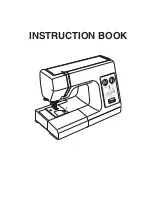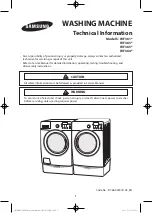
Publication Number 53923. Issue 3, March 2016
Wayfarer 6 Generic Service Manual
Page 25
4.1.2
Connecting The Cable Assemblies
Incorporated in the Wayfarer 6 mounting tray is an interface PCB so that external
connections are wired to the screw terminal blocks of the interface PCB. Firstly
remove the moulding of the Wayfarer 6 tray to gain access to the mount plate and
the interface PCB. Feed the cables through the hole in the mount plate. Slacken
the strain relief clamps and feed the wires through the clamps and then retighten.
Refer to Figures 5a and 6 for wiring information.
WARNING
INJURY TO PERSONNEL AND/OR DAMAGE TO EQUIPMENT IS POSSIBLE
IF THE VEHICLE POWER SUPPLY IS NOT ISOLATED WHEN CABLE
CONNECTIONS ARE MADE DURING THE FOLLOWING INSTALLATION
PROCEDURES.
Whenever practicable, the power cables must be connected to the
vehicle battery
via an in-line 5amp fuse, the brown wire to the
positive
terminal and the white
wire to the
negative
terminal, regardless of the polarity of the vehicle’s earth, i.e.
negative or positive earth. If it is not practicable to connect the power leads
directly to the vehicle batteries, they should be connected to the relevant busbar
(vehicle fuse unit) and the +ve line fused with a 5 amp fuse. An optional on/off
switch is recommended to isolate the ETM when required (See Figure 6).
If the
vehicle has a "positive earth" supply, both the +ve and -ve supply lines to the ticket
machine should be fused.
Ensure that screened cables are used for the power, RS232 and RS485 connections.
The screens must be attached at the Wayfarer 6 tray end only.
A relay contact output (2A DC max) is provided on the Wayfarer 6 tray (PL6). It is
up to the user to ensure that adequate fusing is provided when using these
contacts.
When running cables during the installation, care must be taken to avoid the sharp
edges of metal bulkheads. Whenever a cable run passes through a hole in a metal
fixture (e.g. a bulkhead), the hole must be fitted with an appropriate sized
rubber/plastic grommet. Long cable runs, or changes in direction of a cable run,
must be cleated to a firm, immobile object to ensure that vibration does not cause
the outer covering of the cable assemblies to chaff and perhaps short out.
4.1.3
Wayfarer 6 Tray Interface PCB Connections
Figure 5a shown on the following page details the location and function of the
connectors and the LED’s on the Wayfarer 6 tray interface PCB. It also shows the
links that can be fitted for different system requirements. Figure 6 shows all the
external wiring connections required for the Wayfarer 6 tray.
















































